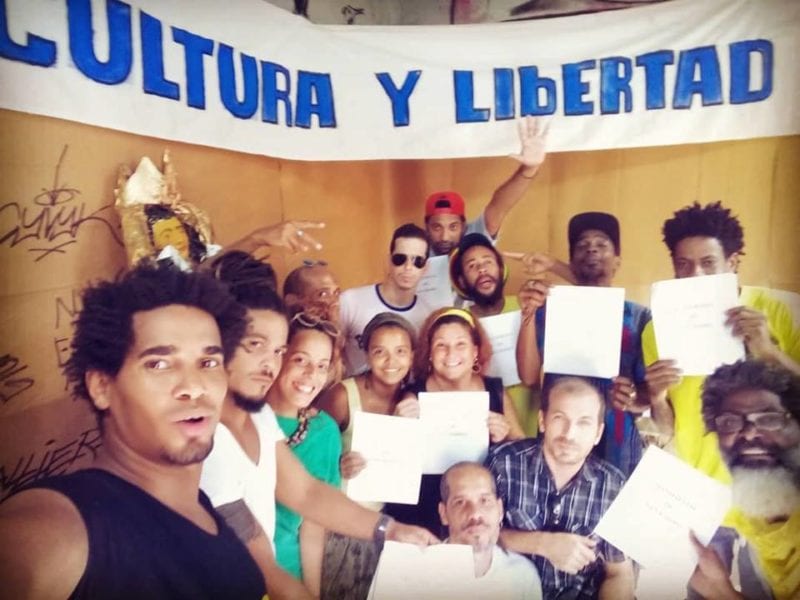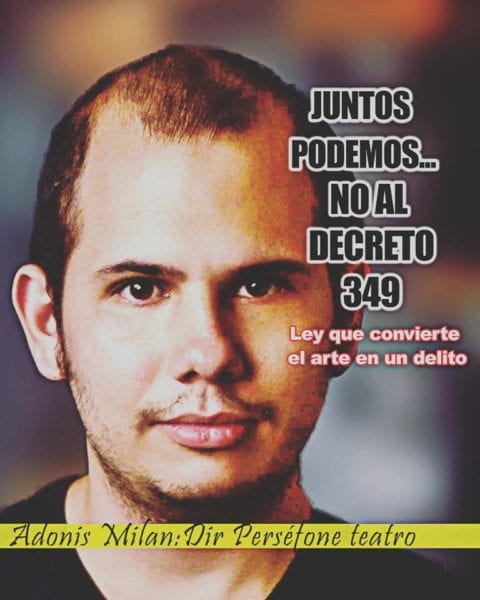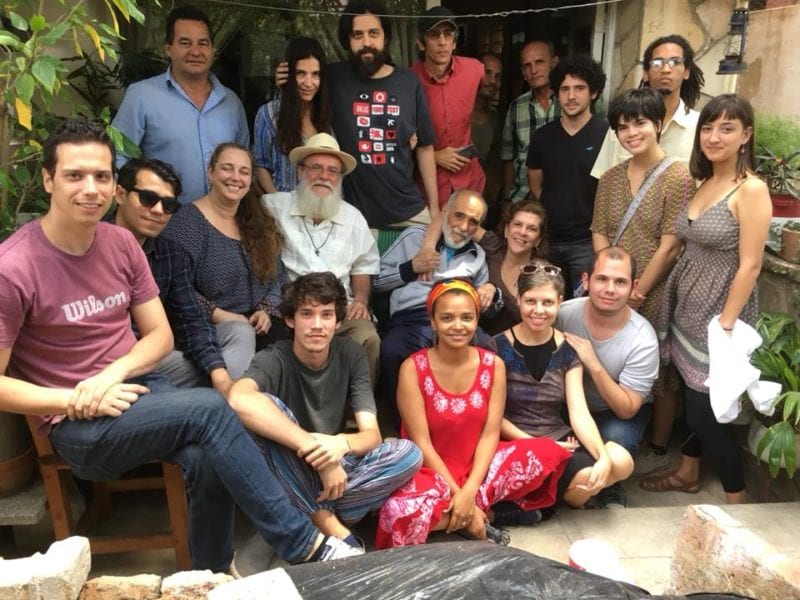I Also Disagree with the Law (349) that Outlaws Independent Art in Cuba
By Adonis Milan

HAVANA TIMES – Any cultural policy produced by a totalitarian and repressive government is a policy of exclusion and creative castration, not only for artists but for everyone. In Cuba, nothing is born but everything dies, nothing moves forward but everything stands still, so many years after when Fidel Castro announced his ruling against art in his 1961 “Words to Intellectuals” speech.
The Castro dynasty skillfully hides itself behind the curtain, a new repressor is playing the role of totalitarianism’s megaphone. Like I have said previously, Cuba is far from overcoming periods of its history, instead we return to the same thing but with greater force.
A movement of artists has decided to brandish their work as an emblem of change for our shriveled land. This is how a group of independent creators came together, real revolutionaries of Cuban art.
When I founded the Persefone Theater group in mid-2015, I realized everything I had to do in order to make independent theater in Cuba. My group was independent in nature from the very start because the National Council of Performing Arts is responsible for institutionalizing theater on the island and we didn’t have their protection and guardianship.
In the very beginning, I worked with young people who didn’t have any formal academic training, but problems with availability and discipline led me to seek out professional actors and I paid them out of my own pocket in order to maintain a quality performance.
I paid for the little production costs involved and the actors.
To make theater, you need two things: first, actors and secondly, a space.

With respect to space, let me tell you that I was kicked out of three places that belonged to cultural institutions. The myth of equality and culture for everyone once again came crashing down, just like the corrupt government that the Castro brothers founded did.
The last place I was kicked out of was the Hermanos Saiz Association because I took a dissident stance against the regime’s regulations both in my work and my life.
This led me to join Cuba’s independent artists. Independent in every sense of the word but especially in terms of thought. These artists have created a trench of creativity within totalitarianism’s old and demeaning walls. An alternative world opened up before me as a path towards freedom and artistic creation.
In recent times, a small but powerful group of artists has established itself, who disagree with Communist doctrine. State repressive bodies’ response has been to treat us like any other dissident, with violence and harassment. Subpoenas, arrests, sabotaging our cultural events and even beatings became commonplace.
However, the dictatorship didn’t stop there, they knew that it’s hard to silence the efforts of a group of artists. After the front man Miguel Diaz Canel came into power, who had made his shameful stance on censorship clear before, they decided to attack independent Cuban art in a legal way. This is how Decree-Law 349 was born.
This law is a death sentence for artistic creation in Cuba, but it doesn’t only affect independent artists. It regulates artistic creation in its entirety and attempts to wipe out the slightest seed of rebellion. Today, when art is our heritage of thought and people’s freedom, a law is being imposed in Cuba which establishes censorship as a guillotine to freedom.
The dictatorship is trying to distract our attention and make Decree-Law 349 appear to be the solution to calming the reggaeton boom, thereby indulging many artists and intellectuals with a unilateral way of thinking. The truth is that this decree is just a gag for any attempt to raise awareness in society about our reality. And only some privileged artists will serve as thermometers and be able to say a few things. Everyone who thinks that this is freedom of speech is being naive, and that’s a sin.

Contemporary art embodies every style, form and definition, there can’t be a single trend or artistic language that only speaks to one group in society. Social groups are diverse and each and every one of their expressions are valid because it responds to their identity. Wiping out diversity has always been Communism’s wish. Whether we like it or not, reggaeton speaks to a certain group in our community, people who identify with its beat. Trying to create a standard of cultural consumption for everyone is a mistake, as everyone must feel like they identify with whatever speaks to them personally.
On the other hand, reaching to the highest echelons who want to shape this policy is a real error. Their discrimination against those of us who haven’t graduated from an arts school or don’t meet the standards they consider “Art” has been made perfectly clear. We will be entering unknown and unsafe territory for all artists because the definition it tries to encapsulate with the concept “Artist” and the mold it wants to create is very confusing. We have all seen what happens when the dictatorship hijacks terms and uses them in their favor, this has happened with the repeated-to-death terms “Homeland” and “Revolution”.
The solution to wipe out this evil is to come together and raise our voices, to make any glass walls between artists shatter: independent or institutionalized. This law affects every Cuban. Our art speaks about our time, it reveals who we were, who we are and who we will be. As artists and Cubans, we can’t allow them to silence and manipulate something that makes us human beings. Art raises our spirits, it connects us and it makes us stronger as a people. They are attacking it because they know that if they manage to amputate creativity, they will manage to create real robots without a soul or mind.





